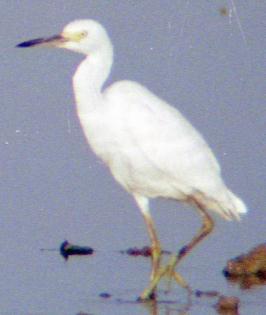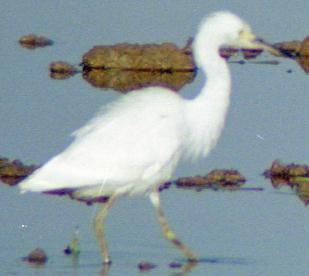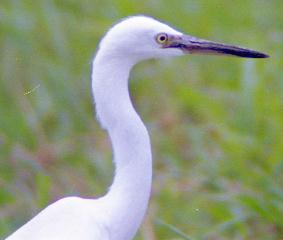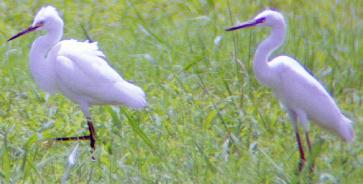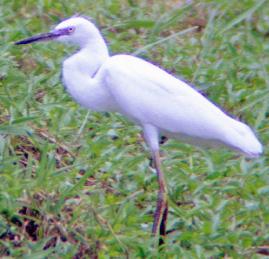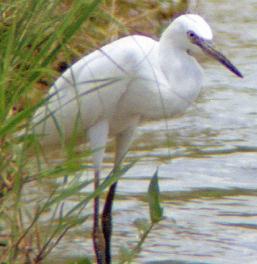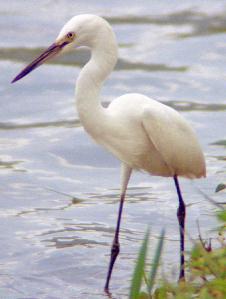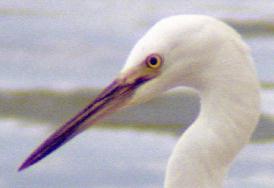The Little Egret is primarily an Old World species
that was first recorded in the New World on 16 April 1954, when an
alternate-plumaged adult female was collected at Graeme Hall Swamp,
Barbados. In subsequently decades it has been recorded with increasing
frequency in eastern North America, the eastern Caribbean and in
northeastern South America. The first breeding colony of Little Egret
in the New World was established in December 1994 at Graeme Hall Swamp,
Barbados, where it nested alongside the similar Snowy Egret, which is
widespread in the New World. In an article titled "Identification of
Snowy Egret and Little Egret" (Birding World 9:434-444), Edward Massiah discusses the differences between these two species, which are summarized in this photo essay.
Identification Summary
Juvenal plumage.--Juveniles
of these species are difficult to distinguish. Both may have extensive
paleness on the bill (especially at the base), dark lores (only briefly
in recently fledged Snowy Egrets), and extensive yellowish or greenish
markings on the legs (especially on the hindlegs). Within a few months
juvenals moulting into 1st basic plumage are virtually
indistinguishable from adults.
Basic (non-breeding) plumage.--Individuals
of both species lack head plumes and are indistinguishable in plumage.
However, the lores are invariably bright yellow in Snowy Egret and
usually bluish, greenish or greyish in Little Egret, but never bright
yellow. The feet tend to be brighter yellow in Snowy Egret, but some
may have greener tones more typical of Little Egret.
Alternate (breeding) plumage.--Individuals
of both species acquire head plumes. The Little Egret develops two
long, lanceolate head plumes that are much longer than the shaggy,
filamentous head plumes of Snowy Egret. The Snowy Egret also develops
recurved filamentous plumes on the back, which are lacking in Little
Egret; however, the back feathers of Little Egret may be ruffled by the
breeze, thus resembling Snowy Egret. The lores of Snowy Egret become
bright orange or reddish when breeding, but are otherwise bright
yellow. In Little Egret the lores may become bright red, orange or
yellow when breeding, but are otherwise bluish, greenish or greyish and
much more variable in color. The feet of both Little Egret and Snowy
Egret may also turn bright orange or red when breeding, but are usually
brighter yellow in Snowy Egret and duller greenish-yellow in Little
Egret.
Body size and shape.--The
Little Egret is distinctly larger and longer-necked than Snowy Egret.
The Little Egret often appears to have a flatter forehead as well, but
this field mark is subjective depending on the angle of view and the
degree of fluffing of forehead feathers.
Bill size.--The bill is distinctly longer and thicker in Little Egret than in Snowy Egret.
Leg size.--The legs are distinctly longer and thicker in Little Egret than in Snowy Egret.
Photo Index
Juveniles (page 1)
Adults together (page 2)
Head profiles (page 3) |
